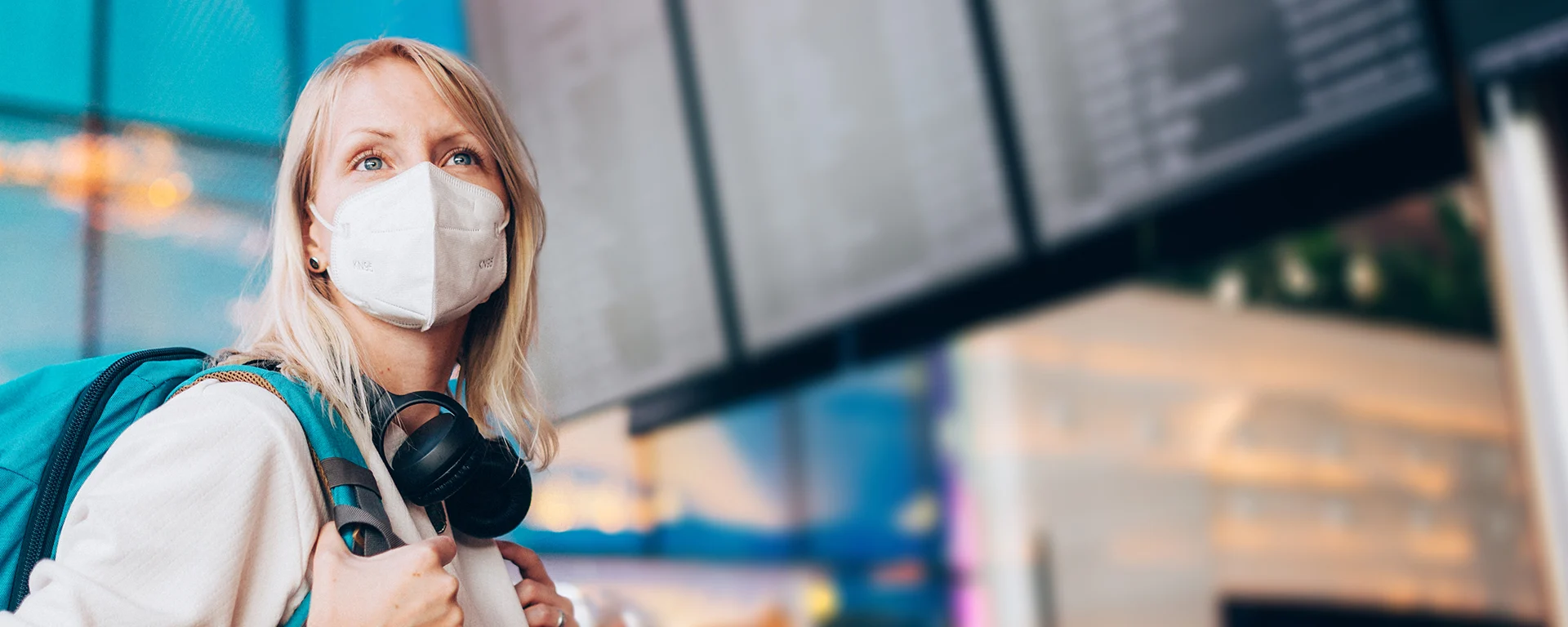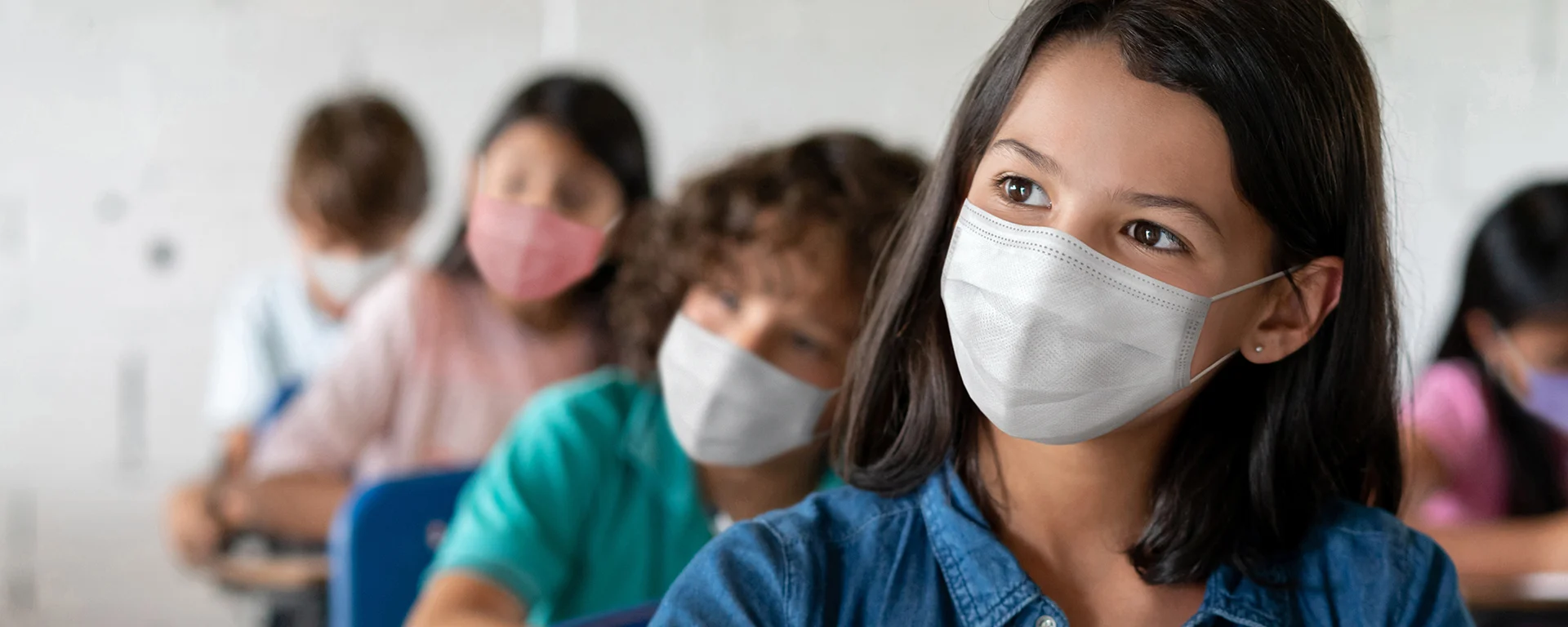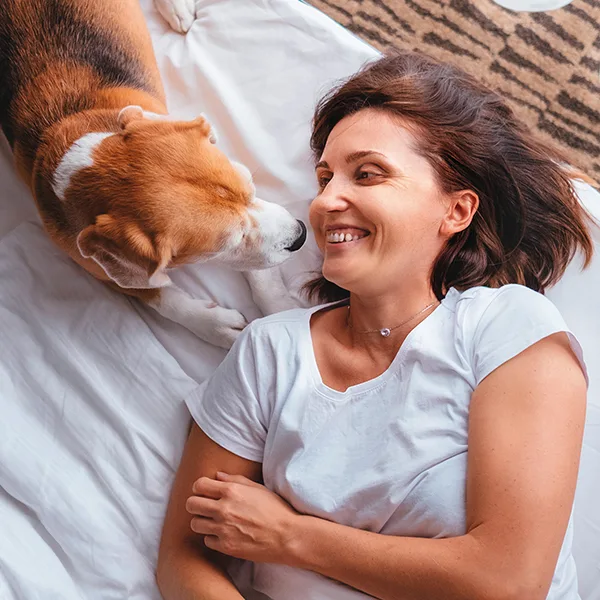When Is It Time to Mask — or Unmask?
How do you know when it’s safe to stop bothering with COVID-19 precautions - or when it’s time to start using them again?
I went to a restaurant for dinner a couple of weeks ago and sat at the bar. The place was packed, and the noise was at that not-quite-painful level you get when everyone’s trying to talk over background music and the sound of other people’s voices. Was I crazy to eat indoors at a high-COVID-risk place like that? It depends.
How do you decide when it’s safe to do things like eat indoors at a restaurant or send your kids to school without masks? And on the flip side, if you’ve felt safe for a while, how do you know whether it’s time to mask up in the grocery store and at the movie theater?
In the US, there’s no official answer to these questions - you have to figure it out yourself. One easy way to check if your risk of getting COVID is higher than you’d like is to use WhenToTest’s COVID Risk Quiz. It’ll tell you whether your risk of having or getting COVID is high, medium, or low, based on what the virus is doing these days where you are and on your personal habits and history. If you’d rather figure things out yourself, you can use the following three questions to guide your thinking.
#1. What’s COVID doing in your area?
If there isn’t a lot of COVID going around, then everything becomes less risky, right? But how do you know what the virus is doing?
The CDC’s official metric is the COVID-19 Community Level, which is based on the number of COVID cases in the area and how many people are hospitalized with the disease. At COVIDActNow.org, you can sign up to be alerted whenever the COVID-19 Community Level changes in the zip code you choose. You can select more than one zip code, so if, say, you live in one area and work or go to school in another, you can find out when something changes in either place. If you just want to check the levels in a specific area, use the CDC’s COVID-19 County Check widget. (Know the name of the city or town but not the county it’s in? You can find out here.)
There’s one thing to remember about the COVID-19 Community Levels, however. Since they’re based partly on hospitalizations, they don’t go up until a lot of people in the area have been sick for a while. It takes time to get infected and then get sick enough to go to the hospital. So by the time the level hits “high” (the point at which the CDC recommends that everyone mask up when they’re indoors in public), the virus has already been spreading in the area for some time.
That may sound weird, but it makes some sense from a public health point of view. If lots of people get a disease but very few of them are getting sick enough to go to the hospital, then that disease is less of a public health problem than one that makes most people seriously ill.
But what if you’re not “most people”? If you’re at high risk of getting very sick from COVID-19, then you may want to keep a closer eye not just on the Community Levels, but on how the virus is spreading in your area. You can still do that in the Community Transmission section of the CDC’s COVID-19 Data Tracker, here.
#2. If I got COVID, am I likely to get very sick or make someone else very sick?
To answer this question about yourself, think about the following:
How old are you? If you’re over 65, you’re in the highest risk group there is for getting severely ill or dying from COVID.
Are you in another high-risk group? The CDC has compiled a long list of high risk conditions, which you should check. If your immune system doesn’t work properly (or you’re pregnant, which does funky things to your immune response), you’re in a very high-risk group, as are people with any kind of chronic heart or lung disease and those with diabetes.
Do you or your kids live, work, or go to school with anyone who’s high-risk? Don’t be too quick to say no. Do you know for sure that none of your coworkers has any of the conditions on that list? What about the folks you sing in the choir with — or play poker with every week?
Are you up to date on your vaccinations? Check the CDC’s website to see what “up to date” means for you right now. it’ll almost certainly include the new booster that’s designed to work against both the original strain of the virus and Omicron BA.4/5. Being up to date makes it much less likely that you’ll get severely ill or die from COVID if you do get infected. It also means you’re less likely to infect other people.
What’s your workplace like? How COVID-risky your job is mostly depends on two factors: How many people you’re around in person every day, and how much fresh air your job site has. If you’re in a high-COVID-risk job, not only are you more likely to get the virus, you’re also more likely to give the disease to someone else if you do get infected. If you’re not sure how risky your job is, check here for a quick overview of risk levels, or here for all the nitty-gritty details.
#3. How do you feel about risk?
You’re the only one who can answer this question, and it’s the one answer that doesn’t have to be rational. Some people are simply willing to take on more risk than others.
So, what are my answers to these questions? The night I went to that restaurant, the COVID-19 Community Levels were low. I turned 50 this year and I’m up to date on my vaccinations. I’m not in any high-risk category, I don’t live with anyone who is, and I work from home. All that together means that if I do get infected, I’m unlikely to get very sick or make someone else very sick. And for better or worse, I’m a person who’s willing to take some risks.
This time, my calculations worked — I didn’t get sick. Next time, they might not. Like everything else in COVID-19 prevention, my system isn’t perfect. But right now, it’s the best I’ve got.






